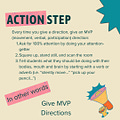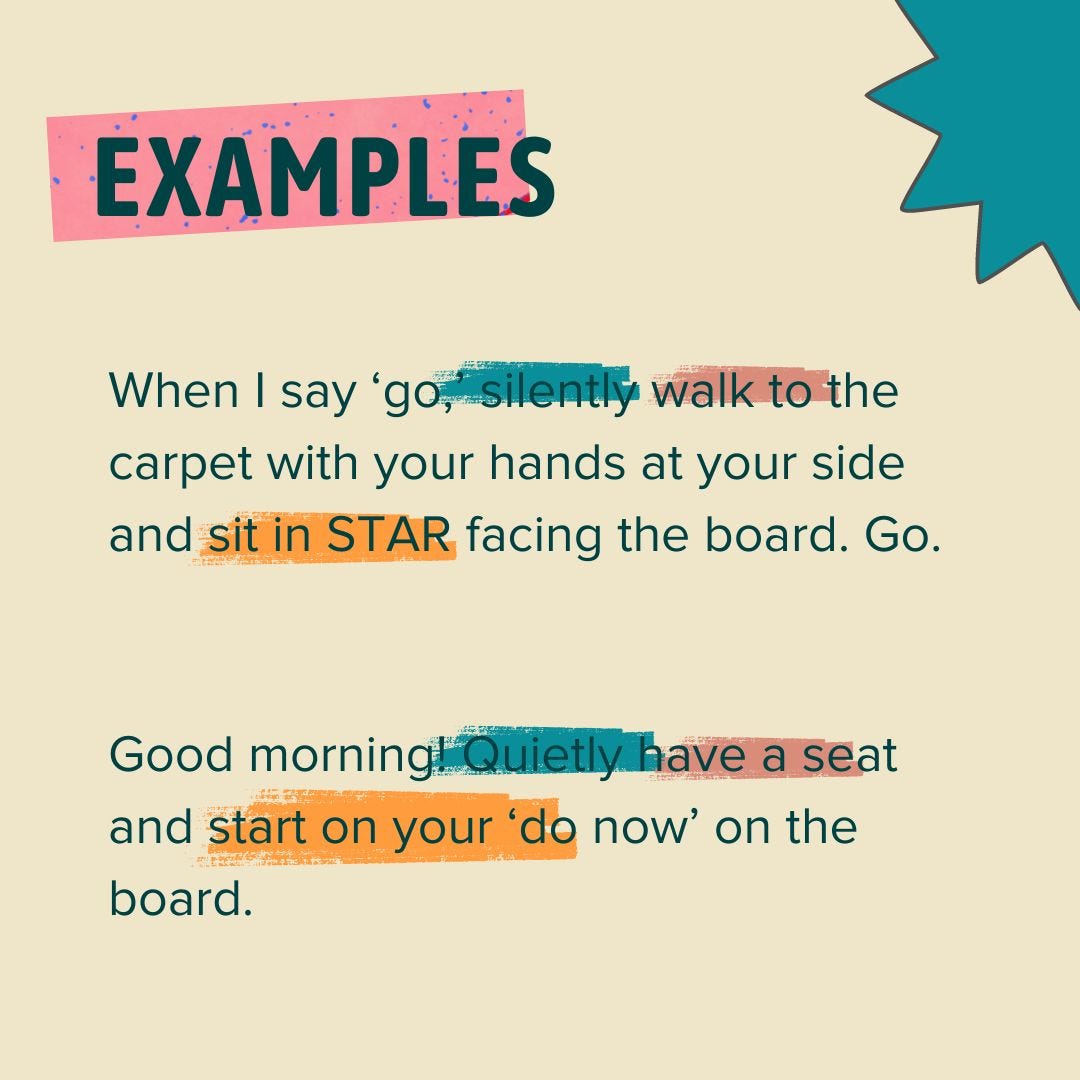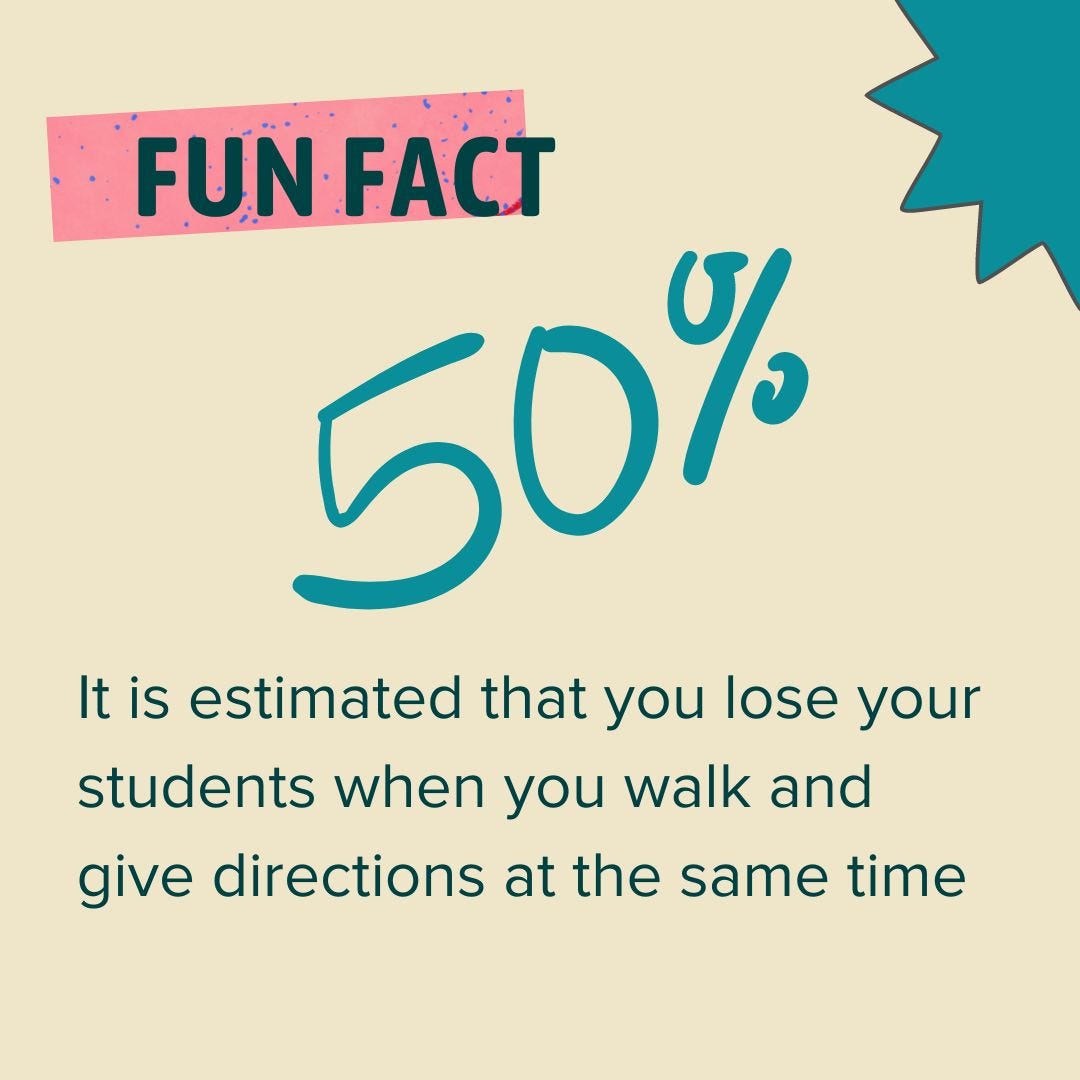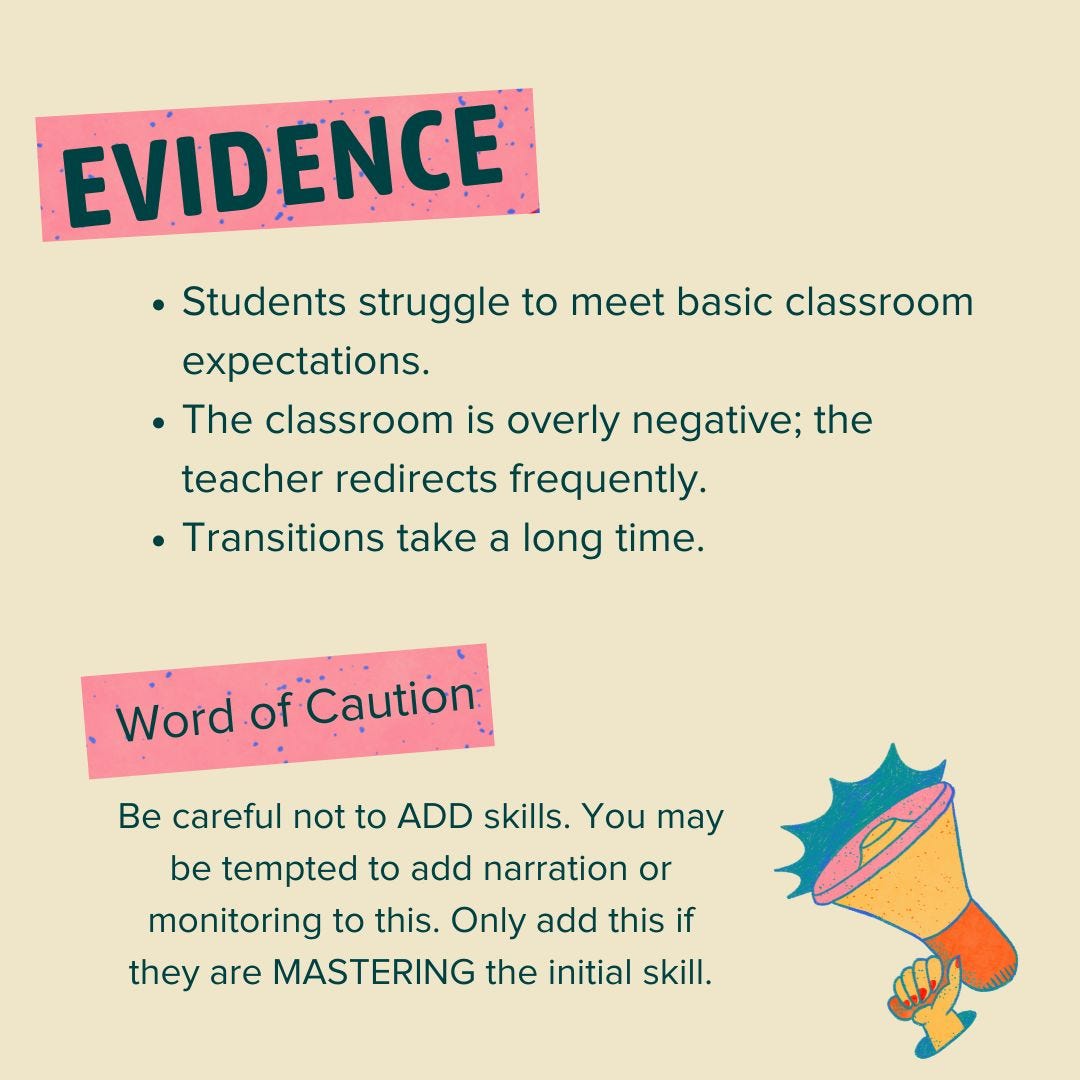Action Step of the Week
Every time you give a direction, give an MVP (movement, voice, participation) direction:
Ask for 100% attention by doing your attention-getter
Square up, stand still, and scan the room
Tell students what they should be doing with their bodies, mouth and brain by starting with a verb or adverb (i.e. “silently move…” “pick up your pencil…”)
Why?
Coined by CT3, MVP directions stand for Movement, Voice, and Participation. These directions tell students how to do something or in what order to do it. Clear, concise directions help students understand the expectations and complete assignments and activities successfully.1
The directions help teachers clarify the appropriate intervention for the direction. If a teacher’s directions are unclear, a student may respond in a way the teacher does not desire.
Quick note: It is important to distinguish between situationally inappropriate behaviors and misbehaviors. Situationally inappropriate behaviors are behaviors that students demonstrate that are inappropriate at that specific time and place (i.e. talking while the teacher is). Misbehaviors are behaviors that students demonstrate that are inappropriate most of the time, regardless of the time and place. This distinction helps to shape mindsets towards how we address behaviors.
Disruptive talking and social chatter are the most common situationally inappropriate behaviors. Therefore, teachers should carefully consider the “V” part of the MVP direction.1
Potential Evidence
Students struggle to meet basic classroom expectations.
The classroom is overly negative; the teacher redirects frequently.
Transitions take a long time.
Questions to ask yourself
How many students meet the expectations?
What is the ratio of positive comments to redirections?
How long does it take for students to transition?
How many questions are there about the directions?
Does the teacher have 100% attention when they ask for it? Do they even ask for it?
Why aren’t students following directions? What is the underlying factor?
How many times does the teacher redirect students for their behavior?
Glossary of Terms
Attention Getter: A technique used to gain the attention of students before transitioning.
MVP Direction: A term coined by CT3 and the No-Nonsense Nurturer approach, this direction includes what the students should be doing with their bodies (movement), mouths (voice), and brains (participation). MVP stands for Movement, Voice, and Participation. For example, “Welcome, silently, go to your seat and start your ‘do now.’”
Explicit Directions: Clearly stating what students need to do.
Step-by-Step Instructions: Breaking down tasks into manageable steps.
Visual Instructions: Using visual aids or demonstrations to supplement verbal instructions.
Coaching Conversation Template
How to use it:
Find any bracketed text.
Fill this in BEFORE you meet with the teacher. You will look silly and I would feel sad. Only use ONE of the evidence examples.
Be you! You can do it. The best coaches are planned coaches.
Praise/Follow Up on Previous Action Steps
I appreciate the opportunity to sit down with you to discuss my observation.
First, I want to follow up on <previous action step or feedback>. Tell me more about how this is going for you. What impact has this had on you and your students?
Today, I saw <positive evidence of specific teacher action>.
What impact does this move have on you and your students?
Evidence
I want to hone in on classroom management, specifically.
<students not following directions> (i.e. I’m sure you feel it. Kids are having a hard time meeting some basic expectations in the classroom right now, so I will give you a technique that will add to your skillset in managing the classroom.)
<overly negative> (i.e. I was in your classroom for 15 minutes. In that time, you addressed the students 35 times, 32 of which were redirections. In addition, you had 10 questions about the directions. I bet that’s frustrating. Tell me about that.)
<long transitions> (i.e. Today, I saw you transition from the carpet to the line. This took you 5 minutes and 40 seconds. I want to give you a technique to help you shorten this time.)
Action Step
Great, so here is your action step: Every time you give a direction, give an MVP (movement, voice, participation) direction:
Ask for 100% attention by doing your attention-getter
Square up, stand still, and scan the room
Tell students what they should be doing with their bodies, mouth and brain by starting with a verb or adverb (i.e. “silently move…” “pick up your pencil…”)
What impact will this have on you and your classroom?
Go ahead and write down the action step.
Plan/Practice
Let me show you what this looks like with the lesson that I observed.
MODEL
You gave the direction <direction from low-inference notes>. I’m going to revise that direction slightly to make sure it has all aspects of MVP - movement, voice, and participation. (get into role-play mode) “Voices off and eyes on me in 3…2…1… <example MVP from lesson observed>”
What did you see in my model that is present in the action step?
PLAN
Let’s practice this for tomorrow. Go ahead and write down an MVP direction. Then, we will get ready to role-play it.
PRACTICE
Now, let’s practice execution. I’ll play the students. Go ahead and start with your attention getter, square up/stand still, and give your direction.
Look for:
Formal register; tone is firm, language is formal
Directions are clear, concise and includes all parts of MVP
Body is still during the direction
No opportunities for students to exploit grey areas (quietly vs. silently)
Practice to mastery. If they are mastering it, you can practice what to do immediately after the directions and then say, “We will practice this part more next time.”
What impact will this type of direction have on you and your students? How will it solve the problem we identified?
Closing/Follow-Up Up
Thanks for playing along. Practice can be awkward, but it is a great way to ensure we can work out all the kinks.
Let’s review the action step.
To follow up, I would love to see this in action. These directions can be hard to master but are so important for your student’s success in the classroom. I look forward to seeing you in action <date>.
Fuhrman, R. (2020, December 1). 4 criteria for Effective Directions. Edutopia. https://www.edutopia.org/article/4-criteria-effective-directions/







